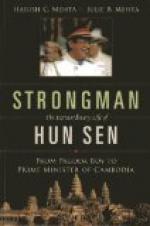The cheap show is an adjunct of the street and a potent educational factor in the training of the city lad. These motion-picture shows have an estimated daily patronage in the United States of two and a quarter millions, and in Chicago 32,000 children will be found in them daily. Many of these children are helplessly open to suggestion, owing to malnutrition and the nervous strain which the city imposes; and harmful impressions received in this vivid way late at night cannot be resisted. At one time, after a set of pictures had been given on the West Side which depicted the hero as a burglar, thirteen boys were brought into court, all of whom had in their possession housebreakers’ tools, and all stated they had invested in these tools because they had seen these pictures and they were anxious to become gentlemanly burglars.[4] Through censorship bureaus, national and municipal, the character of the films put on exhibition is being greatly improved, and the moving picture is destined to a large use by educational and religious agencies.
Many instances of valuable moving-picture exhibits come to mind, including those on travel, nature-study, the passion play, athletic sports, sanitation (especially the exhibits showing the breeding and habits of the house-fly), and various others having to do with the health, happiness, and morality of the people; and from the study of hundreds of nickel shows one is forced in justice to say that although there are dangers from the children’s being out late at night and going to such places unattended, and although the recreation is passive and administered rather than secured by wholesome muscular exercise, yet there has been brought within the reach of the entire family of moderate means an evening of innocent enjoyment which may be had together and at small expense. Properly regulated, it is an offset to the saloon and a positive medium of good influence.
Such a commendation, however, can safely be made for those communities only which take the pains to censor all films before exhibition is permitted. In less than two years the censorship bureau of Chicago has excluded one hundred and thirteen miles of objectionable films. It should be said also that the vaudeville, which now often accompanies the nickel and dime shows, is usually coarse and sometimes immoral. The music, alas, speaks for itself and constitutes a sorry sort of education except in the foreign quarters of our great cities where, in conformity to a better taste, it becomes classic and valuable.
But to describe a typical film of the better sort and to indicate its practical use may have some suggestive value for wide-awake ministers who wish to turn to good account every legitimate social agency. During the Christmas season of 1911 the following film story was set forth to vast audiences of people with telling effect: In a wretched hovel you see a lame mother with three pale children. The rich young landlord comes to collect rent and is implored to improve the place. This he refuses to do because of his small returns on the property. He departs. The father of the family returns from work. They eat the bread of the desolate.




